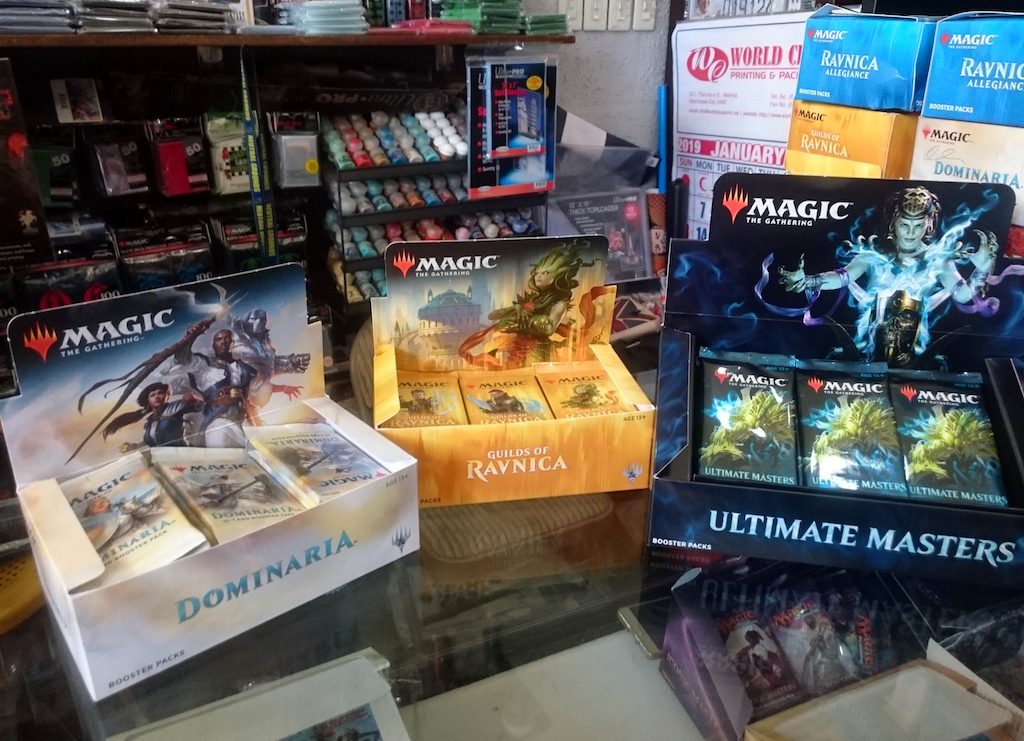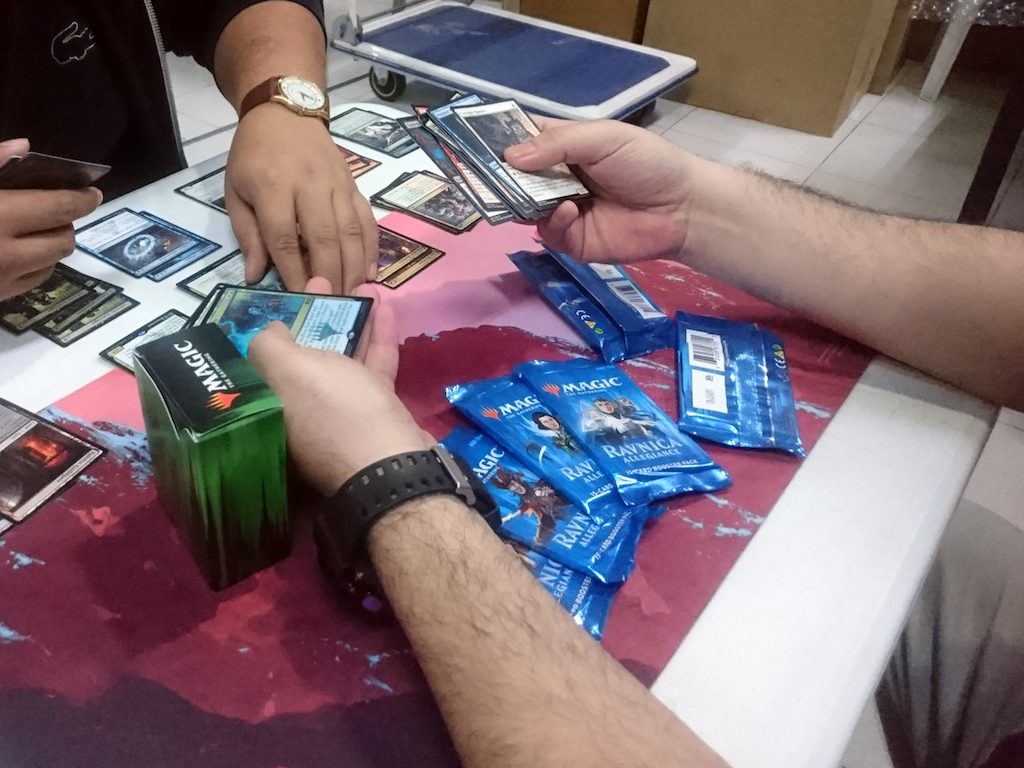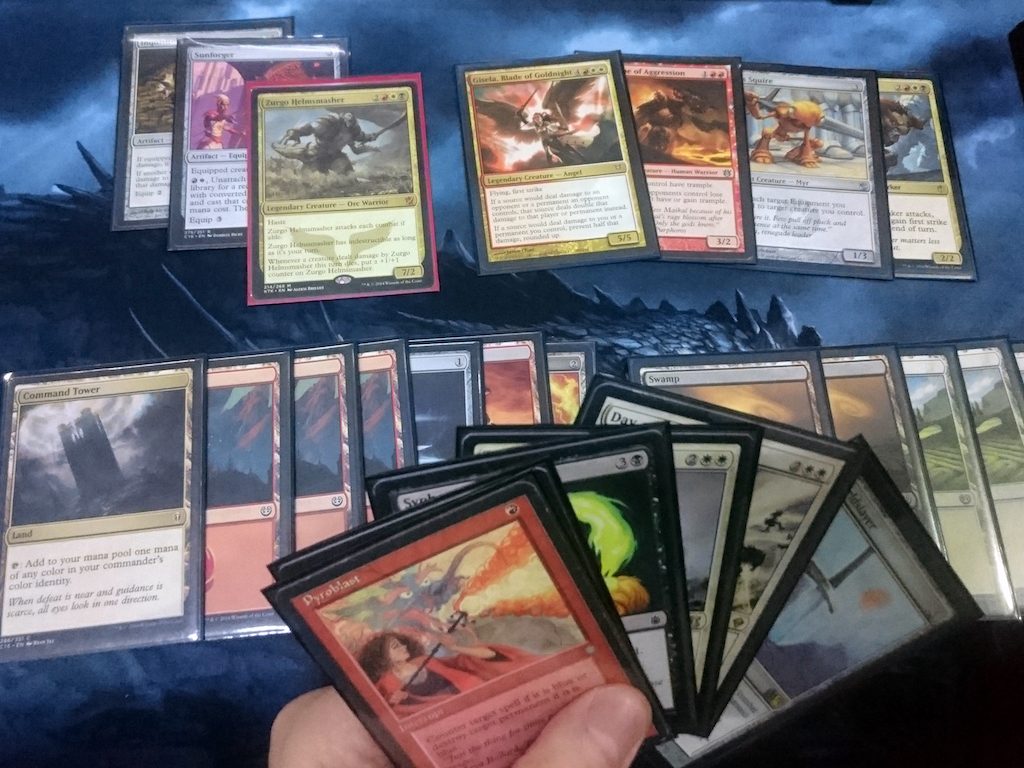SUMMARY
This is AI generated summarization, which may have errors. For context, always refer to the full article.

Welcome to the world of Magic: The Gathering. It’s a place filled with dragons, elementals, wizards, psychotic goblins… and, uh, walking fungi.
The basic rules of the game are fairly easy to grasp, but quickly escalate in complexity.
It is also one of the most addictive games around. This is your last chance to turn back.
‘What’s a Magic: The Gathering?’
Magic: The Gathering (also called MTG or, simply, Magic) is a collectible card game first published by Wizards of the Coast in 1993. Players assume the roles of Planeswalkers, or powerful beings (because nobody wants to be a mediocre being, amirite?), and cast spells and creatures in an attempt to knock the opposing player’s life score to zero.
Spells come in different colors — red (the color of destruction and elemental fury), green (nurture and raw power), white (purity and bravery) blue (illusion and mind games), and black (decay and opportunism). Players need to use appropriately-colored Mana, which is drawn from lands, to cast spells.
But that’s just the tip of the Iceberg. Cards played in conjunction with other cards can have big, game-warping effects. Some even go so far as to “break” the game.
To play Magic, players build decks using cards from their collections. These cards are obtained either in booster packs of randomized cards, or by buying single cards from shops or other players. Players usually build decks according to their preferred playstyles. Aggressive players can build decks using “burn” spells or fast creatures. Players with Type A personalities can build decks that try to control the pace of the game. Aggro and control are just two deck archetypes in the game. While the internet has homogenized deck building somewhat, players still have the opportunity to brew their own decks and strategies.
The cheapest way to amass cards is by buying packs, but to build a competitive deck (which you won’t really need at the start of your MTG journey), you’ll need very specific cards. You could, in theory, buy a bunch of packs and still not get the cards you need. So the most cost-efficient way to get specific cards is by buying singles. And now it’s time to discuss the secondary market.
The Secondary Market
Being a collectible card game, cards that are sold as singles are subject to secondary market prices. How much a card sells for on the secondary market is based on rarity and demand. Cards are printed in 4 different rarities: common, uncommon, rare, and mythic. A modern booster pack will contain 10 commons, 3 uncommons, and 1 rare.
In certain packs, the rare card will be replaced with a mythic, which is a “rarer” rare.

Some of these cards can get pretty pricey. Even a common card can spike in value, if there’s enough demand for it. But on the flipside, cards that aren’t very good in-game — which players refer to as “jank” — sell for super-cheap.
While most 90s pop culture trends have gone bust — I’m looking at you, Beanie Babies and gimmicky holo-foil-glow-in-the-dark comics — the value of some older Magic cards (specifically the ones from the first 3 printings) have held.
There’s even a subculture within Magic called MTG Finance, which is dedicated to speculating on older money cards, as well as select new ones. But that’s a pretty crazy group on its own, and is a topic for another day.
How to Start
First, you need to download the official rules. Then you need to decide which format you want to play. There are lots of formats, but for now, let’s stick with these 3:
Standard: As the name implies, this is the definitive Magic format. Decks in this format are constructed using cards from the most recent sets — usually the last 5. Decks are made up of 60 cards, and can have up to 4 copies of each spell.
Commander: Commander decks are comprised of 99 cards with no duplicates, plus one creature designated as the deck’s commander. The deck’s overall strategy is hinged on its commander.
Limited: Players open sealed packs, and have to create a deck on the spot. Limited comes in two different flavors: Draft, where each player gets 3 boosters. They open a booster, pick one card, then pass the remaining cards to the adjacent player. The process continues until all cards in all packs have been drafted. And Sealed Deck, where a player gets 6 boosters to themself, and build a deck from those cards.
You could deep-dive and immediately build a customized deck using info gleaned from Reddit and using cards bought from the secondary market. But unless you’re accustomed to the complexity of modern tabletop games, that’s probably not the best way to start.
The ideal way to start, in my opinion, is by getting a preconstructed Standard or Commander deck. These decks aren’t super-powerful, but they’re still fun to play, and are great for easing you into the game. They’re also relatively affordable, and are readily available at most gaming shops.

It’s also worth noting that Commander is a multiplayer format. This means games can get pretty long and complex. I once played a Commander game that lasted 3 hours, 4 boxes of pizza, and several bags of chips.
Confused? Here’s a TL;DR
Start with a format called Standard. This format uses cards from the most recent sets. You can start playing Standard by buying a preconstructed deck.
If you want a bit more complexity, try playing Commander. You can start playing Commander also by buying a preconstructed deck.
If you already know how to play the game, but have no cards, play Limited. Most gaming stores post schedules for Sealed Deck and Draft events.
Once you get a feel for the game, you can start exploring its deeper strategies and complexities.
Where to Play
Most game stores also have space reserved for players. Visit your FLGS (“friendly local game store”) and strike up a conversation with the people there. Geeks can be notoriously shy, but easily open up when talking about mutual interests.
You can also look for games on the different MTG-related Facebook groups. Since Magic is one of the most popular games around, it shouldn’t be too hard to find other players.
If you have friends who also want to get into the game, you can always play at home (this is called casual or “kitchen table” Magic).
I happen to prefer this set-up, since trash-talking with friends and using stupid, underpowered cards is my preferred way to play Magic! – Rappler.com

Iñigo de Paula is a writer who lives and works in Quezon City. When he isn’t talking about himself in the third person, he writes about pop culture and its peripheries.
Add a comment
How does this make you feel?
There are no comments yet. Add your comment to start the conversation.